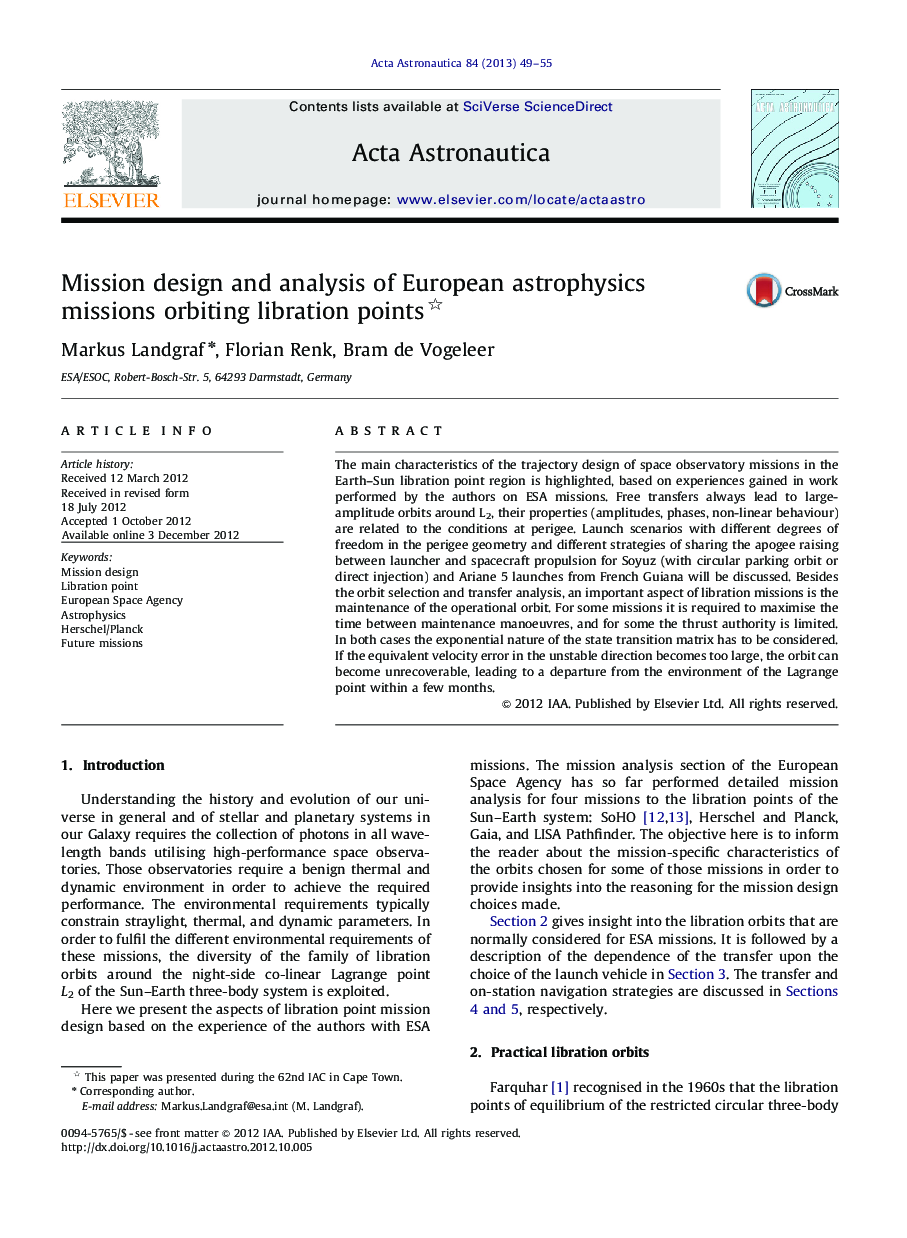| کد مقاله | کد نشریه | سال انتشار | مقاله انگلیسی | نسخه تمام متن |
|---|---|---|---|---|
| 1715115 | 1519966 | 2013 | 7 صفحه PDF | دانلود رایگان |

The main characteristics of the trajectory design of space observatory missions in the Earth–Sun libration point region is highlighted, based on experiences gained in work performed by the authors on ESA missions. Free transfers always lead to large-amplitude orbits around L2, their properties (amplitudes, phases, non-linear behaviour) are related to the conditions at perigee. Launch scenarios with different degrees of freedom in the perigee geometry and different strategies of sharing the apogee raising between launcher and spacecraft propulsion for Soyuz (with circular parking orbit or direct injection) and Ariane 5 launches from French Guiana will be discussed. Besides the orbit selection and transfer analysis, an important aspect of libration missions is the maintenance of the operational orbit. For some missions it is required to maximise the time between maintenance manoeuvres, and for some the thrust authority is limited. In both cases the exponential nature of the state transition matrix has to be considered. If the equivalent velocity error in the unstable direction becomes too large, the orbit can become unrecoverable, leading to a departure from the environment of the Lagrange point within a few months.
► Details of some ESA libration point mission scenarios.
► Presentation of concepts of how ESA missions fly at and around libration points.
► Consideration of launch and early operations.
► Trade-off of transfer methods for optimum science output.
► Examples from operational experience with ESA missions.
Journal: Acta Astronautica - Volume 84, March–April 2013, Pages 49–55